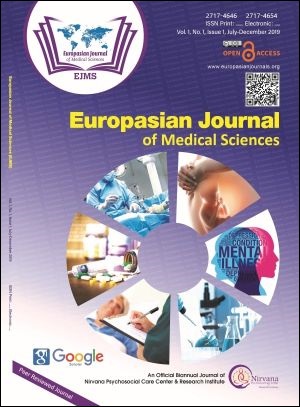Formulation and Evaluation of Fast Dissolving Oral Films of Cetirizine Hydrochloride
Keywords:
oral films, cetirizine, hpmc, polyvinyl alcohol, solvent casting, release rateAbstract
Background: Fast-dissolving oral delivery system is a solid dosage form, which is used as a novel approach, as it dissolves rapidly in the mouth and directly reaches the systemic circulation. This facilitates rapid absorption and reduces first-pass effects. These films provide better utilization without the need to chew and do not require the need for water for administration. Fast-dissolving oral films might be useful in special patients like those with swallowing difficulties and in that in chemotherapy. This study was aimed to formulate and evaluate the fast dissolving oral films of cetirizine hydrochloride.
Methods: Oral films of cetirizine hydrochloride were prepared using hydroxypropylmethylcellulose (HPMC), Polyvinyl alcohol, glycerol, aspartame in different concentrations by the solvent casting method. Films were evaluated for different physical Films were subjected to USP dissolution studies.
Results: The drug content of the nine formulations was found to be in the range as per Indian Pharmacopeia. In vitro release studies indicated 60-91% release within 30 min in the formulated oral films. The best release was found to be 91.58% of formulation F7, having a minimum concentration of HPMC alone as a polymer along with other common ingredients and minimum release was found to be 60.01% of formulation F1. Surface pH was found to be near to neutral (pH 7) which was good for buccal mucosa.
Conclusion: Increasing the concentration of polymer (PVA and HPMC) while keeping the plasticizer ratio constant showed enhanced folding endurance. The dissolution rates were also increased with the increase in the concentration of the polymers. The high concentration of polymers decreased the release rate of cetirizine while a low concentration of polymers causes an increment in the release rate of cetirizine.
Downloads
Downloads
Published
How to Cite
Issue
Section
License
The author(s) retain the ownership of the copyrights for their work published in EJMS without any restrictions. Upon submission, the author(s) grants EJMS a license to publish, including to display, store, copy, and reuse the published content.
License to Publish
By submitting a manuscript to EJMS, the author(s) grant the journal a non-exclusive license to:
- Publish and distribute the content in all formats, media, and platforms (both existing and future), while identifying EJMS as the original publisher.
- Reproduce, display, and store the content in both print and online formats, including institutional and digital repositories.
- Translate, adapt, and summarize the work, including reprints, extracts, and abstracts.
- Develop derivative works based on the original content.
- Include the work in electronic databases and provide links to third-party materials.
Creative Commons Licensing
In addition to EJMS’s publishing rights, authors grant third parties the right to use, share, and distribute their work under the Creative Commons Attribution 4.0 (CC BY 4.0) International License. This allows unrestricted use of the content, provided proper attribution is given to the original author(s) and the journal.

